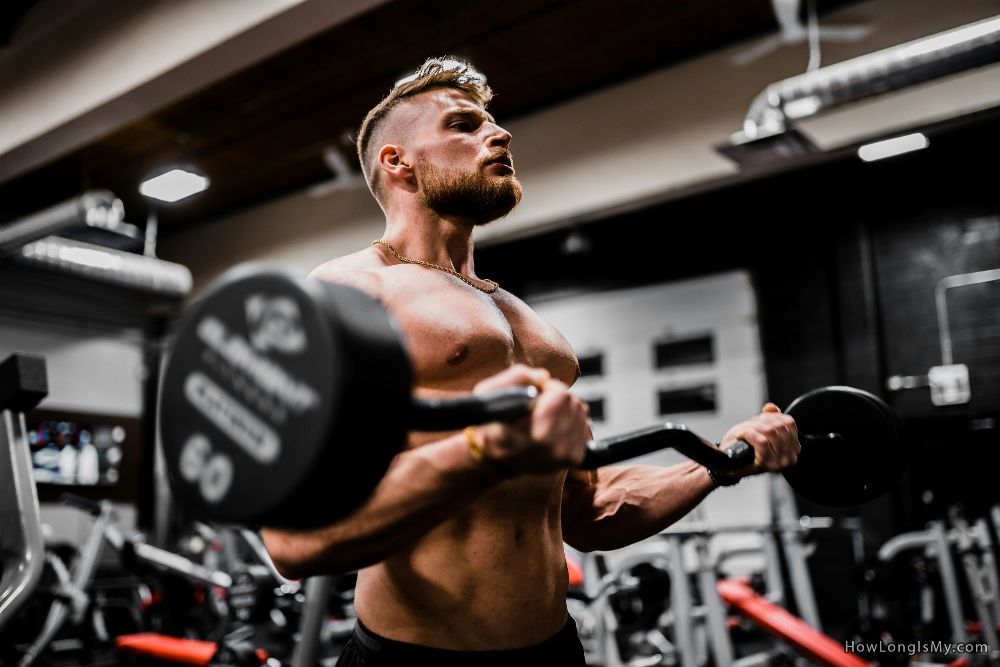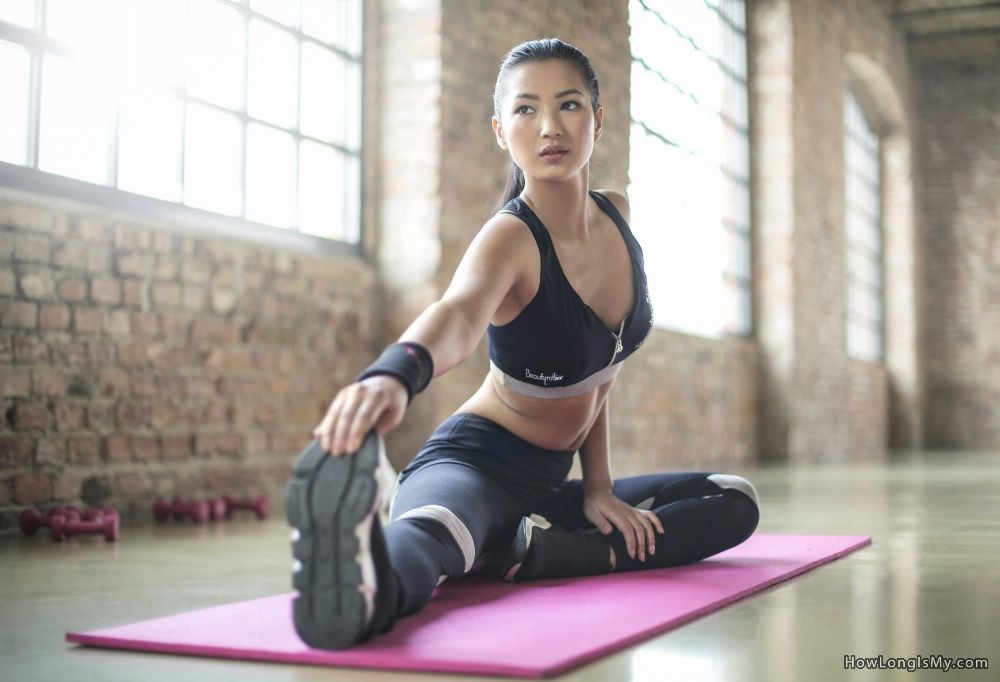The length of a workout routine can vary depending on your fitness goals, lifestyle, and overall health. Whether you’re aiming for strength building, weight loss, or general fitness, the right workout duration is crucial to avoid burnout, injury, or diminishing returns. Most experts recommend that a typical workout should last between 30 to 60 minutes, but this can vary depending on your fitness level, the intensity of your workouts, and your overall wellness routine.
This article will explore the factors influencing a good workout, including nutrition, sleep, hydration, and environment, and address frequently asked questions about optimal workout durations.
Factors In fluencing a Good Workout
fluencing a Good Workout
Your workout’s effectiveness isn’t just about time spent in the gym—it’s also about how you prepare, recover, and fuel your body. Here are key factors that influence a good workout:
1. Good Sleep Routine: Sleep is Key to Recovery
One of the most overlooked elements of a good workout is sleep. Sleep is when the body heals, repairs, and builds muscle after exercise. Without proper rest, your body cannot effectively recover, which leads to fatigue, decreased performance, and a higher risk of injury.
- Tip: Aim for around 7-9 hours of sleep per night. If you haven’t slept well, it’s best to avoid intense exercise, as inadequate sleep leads to decreased reaction time and poor coordination.
- Why you should avoid working out on poor sleep: When you don’t get enough sleep, your stress hormone (cortisol) levels rise, which impairs muscle recovery and increases the likelihood of overtraining.
2. Nutrition: What to Eat on Workout Days
Your diet plays a critical role in how well your body responds to exercise. While protein is important for muscle recovery, fats, carbohydrates, and minerals should not be overlooked.
Warm Drinks for Circulation
- Why warm drinks matter: Drinking warm water or herbal teas before working out enhances circulation and increases core temperature, allowing your muscles to perform optimally.
- Avoid cold drinks during workouts: Cold drinks can restrict blood vessels and slow circulation, leading to poor oxygen delivery to muscles and increased metabolic stress.
Less Acidity, More Alkaline Foods
- High-acid foods, such as processed meats, sugary drinks, and citric acid-containing beverages, can increase inflammation and lead to poor workout recovery. Instead, focus on consuming alkaline-rich foods, which promote better digestion, energy levels, and muscle recovery.
- Foods to emphasize:
- Green lettuce salads
- Leafy greens like spinach and kale
- Fresh vegetables (broccoli, cucumber, zucchini)
- Warm mineral water (important for maintaining hydration without causing acidity)
Importance of Fats in Your Diet
- Saturated and Monounsaturated Fats: Healthy fats are essential for hormone production, including testosterone, which plays a key role in muscle growth and recovery.
- Avoid overloading on protein: Too much protein, especially without adequate fats, creates metabolic stress and increases acid build-up, which can slow recovery and lead to muscle fatigue.
- Prioritize fatty meat cuts: When consuming animal proteins, focus on fatty cuts such as salmon, beef with visible fat, and chicken thighs. These cuts provide a balanced ratio of protein and fat, which supports energy production and recovery.
3. The Importance of Warmth During Exercise
Staying warm while exercising is crucial to prevent muscle strain, enhance circulation, and promote sweating.
- Sweating is key to detoxification: When you exercise in a cold environment, your body struggles to stay warm, leading to reduced circulation and decreased ability to sweat. This prevents your body from effectively detoxifying through sweat, which can hinder muscle performance.
- Cold environments lead to acid build-up: Exercising in the cold restricts blood flow, causing lactic acid build-up and increasing the risk of muscle soreness and fatigue. Keeping warm ensures better blood flow and reduces metabolic stress on your body.
4. Stretching: When to Stretch
 Stretching is an important part of any workout, but the timing of your stretches is equally crucial.
Stretching is an important part of any workout, but the timing of your stretches is equally crucial.
- Stretch after, not before, workouts: Static stretching (holding a stretch for a prolonged period) before exercising can weaken your muscles and reduce performance. Stretching post-workout helps to reduce stiffness, elongate muscles, and improve flexibility.
- Dynamic warm-ups before workouts: Instead of static stretches, try dynamic movements like arm circles, leg swings, or light jogging to warm up your muscles and prepare them for exercise.
How Long Should Your Workout Be?
The length of your workout largely depends on your fitness goals, but here are general guidelines for different workout types:
- Strength Training:
- Ideal Duration: 45-60 minutes
- Focus on completing compound exercises like squats, deadlifts, and presses with proper rest periods between sets.
- Cardio Workouts:
- Ideal Duration: 30-45 minutes
- Moderate to high-intensity cardio, such as running, cycling, or swimming, should last around 30-45 minutes for optimal cardiovascular benefits without overexerting your muscles.
- High-Intensity Interval Training (HIIT):
- Ideal Duration: 20-30 minutes
- HIIT workouts are short but intense. Because of the high energy expenditure and muscle involvement, HIIT sessions should not exceed 30 minutes to avoid overtraining.
- Flexibility and Yoga:
- Ideal Duration: 30-60 minutes
- These sessions can be longer and more restorative, focusing on slow, controlled movements that promote flexibility, mindfulness, and recovery.
Frequently Asked Questions (FAQ)
1. How many days a week should I work out?
- It depends on your goals and fitness level. For general fitness, 2-3 days a week of varied workouts is sufficient. For more specific goals, like muscle building, 3-4 days a week can be effective, ensuring proper rest between sessions.
2. Is it better to work out in the morning or evening?
- This is largely based on personal preference. However, studies suggest that exercising in the morning can help you burn more fat, while evening workouts may help with strength building due to increased body temperature and flexibility.
3. Should I work out if I’m tired?
- If you’re feeling slightly fatigued, a light workout can boost energy levels. However, if you’re severely sleep-deprived or feel drained, it’s best to rest. Working out on insufficient sleep can do more harm than good.
4. Should I eat before or after a workout?
- Pre-workout nutrition helps fuel your body, so a light meal or snack rich in carbs and protein 1-2 hours before your workout is ideal. Post-workout meals should focus on protein and carbohydrates to replenish glycogen stores and repair muscle tissues.
5. How important is hydration during workouts?
- Staying hydrated is vital for maintaining energy levels, supporting circulation, and regulating body temperature. Avoid cold water during exercise, as it can slow circulation and impair digestion.
Conclusion
There is no one-size-fits-all approach to workout length, but the general recommendation is 30-60 minutes per session, depending on your goals and fitness level. More importantly, creating a balanced routine that includes proper nutrition, adequate sleep, hydration, and a warm environment will ensure you get the most out of your exercise.
By taking care of your body holistically—before, during, and after workouts—you will experience better performance, faster recovery, and an overall healthier lifestyle.
This article covers a holistic approach to exercise, emphasizing the importance of diet, sleep, and proper hydration while outlining workout lengths for different goals. The focus is on balancing intensity with overall health to avoid metabolic stress and improve fitness outcomes.
Sources that provide information on optimal workout durations:
1. Healthline
This article discusses how the ideal workout duration can vary significantly depending on individual goals, preferences, and exercise types. For weightlifting and bodyweight strength training, sessions typically last 45–60 minutes, while cardio workouts can range from 30 to 60 minutes. The article emphasizes that the quality of the workout is more important than its length.
URL: https://www.healthline.com/health/fitness/how-long-should-a-workout-last
2. Verywell Fit
This article highlights that the optimal workout length depends on factors such as fitness goals, current fitness level, and exercise type. For general health, the American College of Sports Medicine recommends at least 150 minutes of moderate-intensity exercise per week, which can be broken down into 30-minute sessions, five days a week. For weight loss, longer durations may be necessary, but it’s essential to balance intensity and duration to prevent burnout.
URL: https://www.verywellfit.com/how-long-should-i-work-out-3495483
3. Gymaholic
This article provides guidelines on workout lengths based on intensity and goals:
-
High-intensity workout (gain strength and muscle): 45–120 minutes
-
Moderate-intensity workout (build muscle): 45–90 minutes
-
Light-intensity workout (recovery day): 30–90 minutes
-
High-intensity interval training (HIIT): 15–45 minutes
-
Low-intensity steady state (LISS): 15–90 minutes
These are general guidelines, and individual preferences and goals should be considered.
URL: https://www.gymaholic.co/articles/how-long-should-you-workout-for
4. A Workout Routine
This article emphasizes that there is no universally optimal workout length; instead, the focus should be on proper program design. Typical workouts can range from 30 to 120 minutes, often between 45 and 90 minutes, depending on individual goals and schedules.
URL: https://www.aworkoutroutine.com/how-long-should-my-workout-be/
5. Set For Set
This article discusses that the optimal exercise duration depends on various factors, including individual goals, fitness levels, and the specific exercises performed. It suggests that rather than focusing solely on workout length, individuals should prioritize the quality and structure of their training programs.
URL: https://www.setforset.com/blogs/news/how-long-should-a-workout-be
These sources offer comprehensive insights into determining the appropriate length of workout routines based on individual objectives and circumstances.
